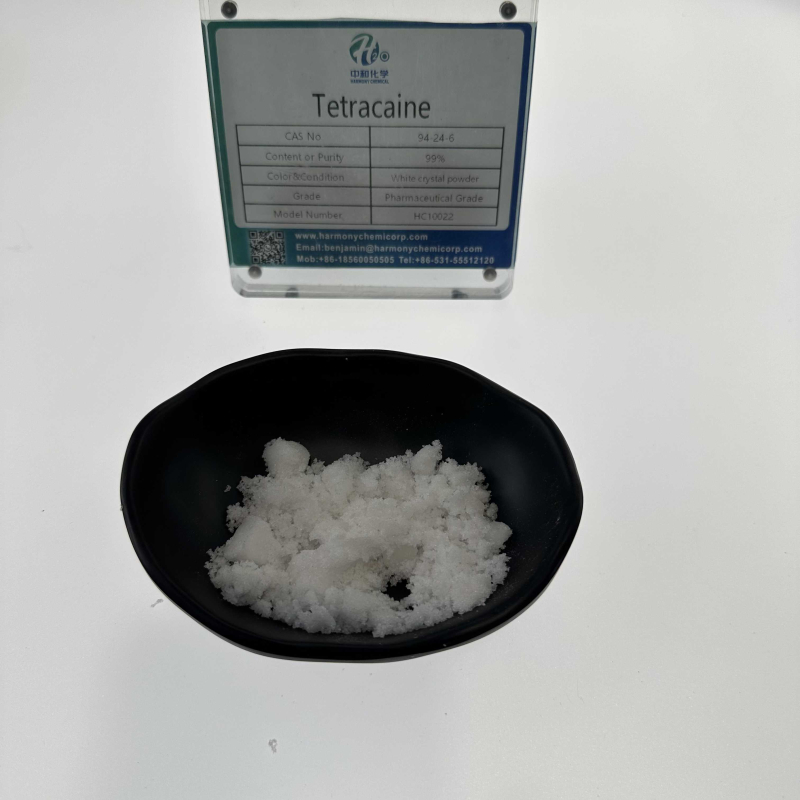CAS NO90-15-3Molecular formulaC10H8Omelting point94-96 °Cboiling point278-280 °Cdensity1.224flash point125 °CStorage conditionsStore below +30°CsolubilitySoluble in benzene, chloroform, ether and ethanol.formCrystalline Flakescolourwhite to off-white
Contact Now
Name3-ChloropropiophenoneCAS NO936-59-4Molecular formulaC9H9ClOmelting point48-50 °Cdensity1.1115 (rough estimate)flash point>230 °FStorage conditionsInert atmosphere,Room TemperaturesolubilitySolidcolourOff-White to Pale YellowSOLUBLEInsoluble
Contact Now
Appearance white block or powderAsh content/% ≤ 0.01 0.01 0.01 0.01The softening factor is 83~143 ℃. Soluble in acetone, toluene, cyclohexane, ethyl acetate, tetrahydrofuran, dichloromethane, etc., insoluble in solvent gas and water
Contact Now
Main purposeEthylene glycol dimethyl acrylate is frequently used in the plastic and rubber industries as a crosslinking agent for ethylene acrylic copolymers, ABS, acrylic sheets, pipes, glass fiber bolstered polyester, PVC, ion trade resins, smokeless powder encapsulation polymerization, glazing, etc. is additionally used as a polymer in copolymerization, which will increase hardness, warmness resistance, climate resistance, solvent resistance, and friction resistance.
Contact Now
Application1. Used as formaldehyde trapping agent to remove formaldehyde remaining in fabrics after finishing by 2D-resin, KB-resin, urea-formaldehyde resin, melamine-formaldehyde resin, etc. It is also used as an intermediate of fine chemicals, used in the manufacture of resins, plasticizers, spray paint, adhesives, etc.2. used as formaldehyde capture agent, intermediate of fine chemicals, also used in the manufacture of resins and formulation of plasticizers, spray paint, adhesives and other uses for the synthesis of chiral microporous materials prepared from non-chiral precursors;3.
Contact Now
English nameAmmonium Zirconium HexafluorideCAS16919-31-6Molecular formula(NH4)2.ZrF6Molecular weight241.29Density1.15g/mLat 25°C(lit.)Water-solubility287.7g/L at 20℃Storage conditionsRoom TempratureAppearanceWhite crystalsmolecular structure:
Contact Now
Melting point: 165-185 ℃Density: 1.08g/cm3Refractive index: 1.488 (20 ℃)Water absorption rate: no longer extra than 0.4%Softening temperature: 60-65 ℃Glass transition temperature: 66-84 ℃ (varies relying on diploma of polymerization)Solubility: Soluble in most natural solvents such as alcohols/ketones/ethers/esters, insoluble in carbon hydrocarbon solvents [2]Application Editing1.
Contact Now
Polyamide resin, as a massive quantity of engineering plastics, is extensively used in fields such as machinery, automobiles, electrical appliances, cloth equipment, chemical equipment, aviation, metallurgy, etc.Becoming an fundamental structural fabric in a number industries, its most important traits are as follows:1. Excellent mechanical properties. Nylon has excessive mechanical energy and precise toughness.2. Good self lubrication and friction resistance.
Contact Now
Usage 1: Used as uncooked substances for photosensitive nylon and photosensitive plastics, constructing grouting materials, and additionally for photography, printing, plate making, etc.Usage 2: It can be used as a water blocking off agent in oilfield drilling operations and development grouting operations, as properly as as as a crosslinking agent in the synthesis of acrylic resin and adhesives.Usage 3: Used as an essential cloth for isolating amino acids and as an vital uncooked fabric&nb
Contact Now
nameUrapidil hydrochlorideCAS NO64887-14-5Molecular formulaC20H30ClN5O3molecular weight423.94melting point156-1580CStorage conditionsKeep in dark place,Inert atmosphere,Room temperaturesolubilityH2O: solubleformsolidcolourwhiteSOLUBLESoluble to 50 mM in water
Contact Now
nameLevamisole hydrochlorideCAS NO16595-80-5Molecular formulaC11H13ClN2Smolecular weight240.75melting point266-267 °Cflash point9℃Storage conditions2-8°Crefractivity-126 ° (C=1, H2O)formCrystalline PowdercolourWhite to almost white
Contact Now
nameLeterMovirCAS NO917389-32-3Molecular formulaC29H28F4N4O4molecular weight572.55boiling point706.5±70.0 °C(Predicted)density1.37±0.1 g/cm3(Predicted)Storage conditionsSealed in dry,Store in freezer, under -20°Csolubility≥57.3 mg/mL in DMSO; insoluble in EtOH; insoluble in H2Oformsolid
Contact Now
Polyvinylpyrrolidone, additionally recognised as PVP, is a polymer of ethylene pyrrolidone. Due to its one-of-a-kind ranges of polymerization, it can be divided into soluble PVP and insoluble PVPP (polyvinylpyrrolidone). The relative molecular weight of soluble PVP is 8000~10000, which can be used as a precipitant to precipitate with the aid of reacting with polyphenols. By the use of this method, there are without problems residual PVP in the wine.
Contact Now
nameNitazoxanideCAS NO55981-09-4Molecular formulaC12H9N3O5Smolecular weight307.28melting point202°Cdensity1.629 g/cm3Storage conditions2-8°CsolubilitySoluble in DMSO (>50 mg/ml)formsolidcolourOff-white
Contact Now
Tetracaine hydrochloride is used for mucosal floor anesthesia, conduction anesthesia, epidural anesthesia, and subarachnoid anesthesia; Used for ophthalmic floor anesthesia, barring constricting blood vessels, detrimental corneal epithelium, and growing intraocular pressure.nameTetracaine hydrochlorideCAS NO136-47-0Molecular formulaC15H25ClN2O2melting point149°Cdensity1.1279 (rough estimateStorage conditions2-8°Csolubilityalcohol: solublesoluble 40 parts of solventformneatcolourWhite to Almost whiteSOLUBLESoluble in water at 50mg/ml
Contact Now
nameTofacitinibCAS NO477600-75-2Molecular formulaC16H20N6Omolecular weight312.38density1.3Storage conditions-20°CsolubilitySoluble in DMSO (up to 100 mg/ml) or in Ethanol (up to 100 mg/ml).formPale powder.Acidity coefficient (pKa)6.04±0.60(Predicted)colourOff-white
Contact Now
nameAmitrazCAS NO33089-61-1Molecular formulaC19H23N3molecular weight293.41melting point86-87°Cboiling point425.25°C (rough estimate)density1.1280Storage conditionsSealed in dry,Store in freezer, under -20°CformPowder/SolidcolourWhite
Contact Now
Polyvinyl alcohol resin (PVA) aqueous answer has awesome moldability and emulsifying properties, forming a movie with amazing adhesion, solvent resistance, friction resistance, tensile strength, and oxygenbarrier properties.Solubility: Soluble in water, typically heated to 65-75 ℃ for whole dissolution. Insoluble in gasoline, kerosene, vegetable oil, benzene, toluene, dichloroethane, carbon tetrachloride, acetone, ethyl acetate, methanol, ethylene glycol, etc. Slightly soluble in dimethyl sulfoxide.
Contact Now
nameL-ProlinamideCAS NO7531-52-4Molecular formulaC5H10N2Omelting point95-97 °Cboiling point213.66°C (rough estimate)refractivity1.4720 (estimate)Storage conditionsKeep in dark place,Inert atmosphere,Room temperaturesolubilityChloroform (Slightly), Methanol (Slightly)formPowder or GranulescolourWhite
Contact Now
nameAlbendazoleCAS NO54965-21-8Molecular formulaC12H15N3O2Smolecular weight265.33melting point208-210 °Cdensity1.2561Storage conditions2-8°CformneatcolourWhite to Off-WhiteSOLUBLE0.75mg/L(209 ºC)
Contact Now
name5-FluorouracilCAS NO51-21-8Molecular formulaC4H3FN2O2molecular weight130.08boiling point190-200°C/0.1mmHgdensity1.4593 (estimate)Storage conditions2-8°CsolubilityH2O: 10 mg/mL, clearformpowdercolourwhite
Contact Now
nameMK-4827 (tosylate)CAS NO1038915-73-9Molecular formulaC26H28N4O4Smolecular weightmolecular weightmelting point>142oC (dec.)Storage conditions-20°C FreezersolubilityMethanol (Slightly)formformcolourOff-White to Pale Yellow
Contact Now
namePrussian BlueCAS NO14038-43-8Molecular formulaC6FeN6.4/3Femolecular weight859.23density1.8Storage conditionsRoom TemperatureformPowderSOLUBLEpractically insolublesensitivenessHygroscopicstabilityStable. Incompatible with strong acids, strong oxidizing agents, ammonia. Light sensitive.
Contact Now
nameTetracaineCAS NO94-24-6Molecular formulaC15H24N2O2molecular weight264.36melting point41.0 to 45.0 °Cboiling point407.59°C (rough estimate)Storage conditions2-8°CAcidity coefficientpKa 8.33±0.03(H2O
t = 20.0
I = 0.10 (KCl)) (Uncertain)formpowder to crystalcolourWhite to Almost whiteIntroduction: Dicaine is a white crystalline or crystalline powder, odorless, slightly bitter in taste, and has a tingling sensation. Soluble in water, soluble in ethanol, insoluble in ether or benzene.
Contact Now





























